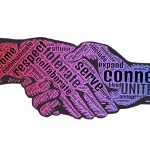Workforce diversity is a valuable asset for any business that seeks a competitive advantage in the global economy.

Definition of Workforce Diversity
Have you ever learned about another culture from someone you met at work? People from all walks of life come together in today’s business world. Many companies pride themselves on having a diverse workforce, one that is made up of individuals with a wide range of characteristics and experiences. Some of the key characteristics of workforce diversity include race, ethnicity, gender, age, religion, ability, and sexual orientation. A company that embraces diversity can broaden its skill base and become more competitive and innovative. Workforce diversity also brings with it a number of issues and challenges.
Issues and Challenges
You may know someone who has experienced unfair treatment based on a personal characteristic. Discrimination occurs when someone is denied opportunities on the basis of a personal characteristic that has no bearing on job performance. Discrimination causes great harm and is illegal in most cases.
It’s natural that tensions will arise among individuals in a diverse workforce, so it’s important for employers to have diversity management policies in place. Most large organizations have taken steps to promote diversity awareness and understanding. These diversity initiatives contribute to a positive work environment that is free from discrimination. Let’s look at some of the specific issues that arise among the diverse groups in the workforce.
Race and Ethnicity – Racial and ethnic minorities may have different perspectives, customs, or approaches to communication in the workplace. These differences can pose challenges for organizations that seek harmonious employee relations. Such challenges can be addressed through appropriate training and education.
Gender – Women have long struggled to obtain equal pay for comparable work and to remove the glass ceiling, an invisible barrier that keeps women and other minorities out of the top managerial ranks. Women also face gender discrimination and sexual harassment, i.e. sexual advances or other unwelcome conduct of a sexual nature. Although much progress has been made to prevent such conduct, there is still a need for training and education.


